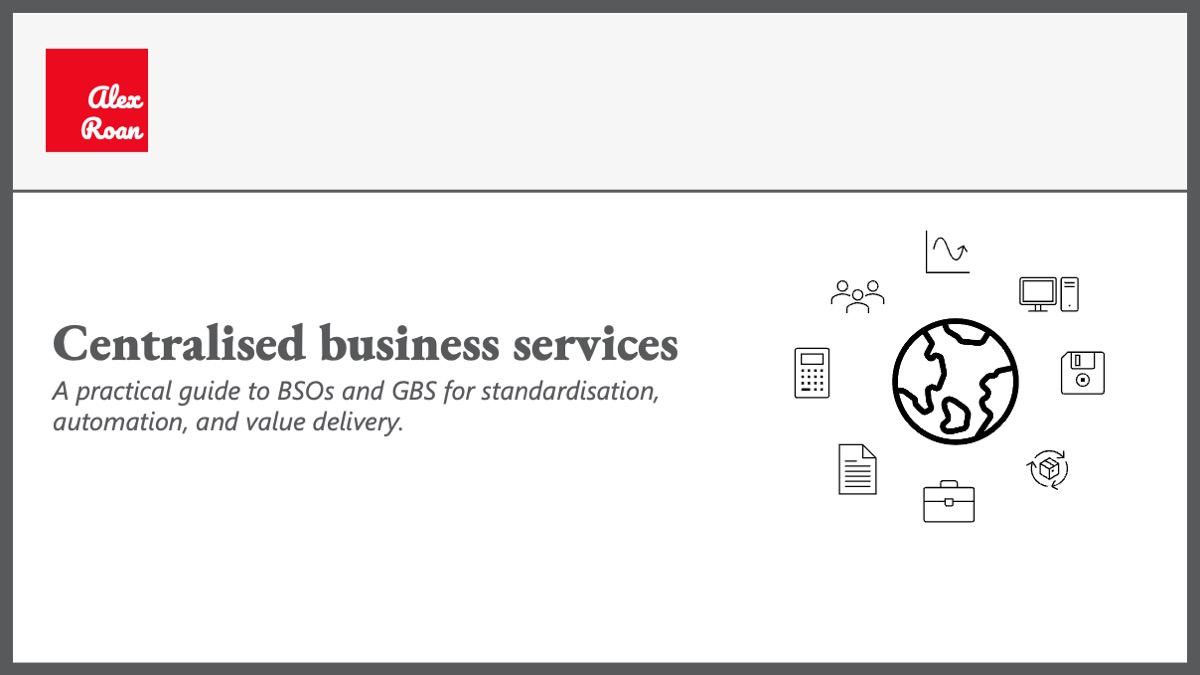Centralised Business Services
post
by Alexander Roan on 29 Jun 2025
I started my career at Procter & Gamble in 2000. At that point, P&G had just launched 'Global Business Services'.
With this launch, P&G was structured into:
- Global business units (GBUs)
- Global brand development
- Manufacturing and supply chain
- Market development organisations (MDOs - per country or group of countries)
- Local marketing
- Sales
- Global business services (GBS)
- Services for GBUs and MDOs
- Typically IT, HR, Finance, etc.
I was based at the Newcastle Upon Tyne GBS centre. GBS operated on a 'follow-the-sun' basis, with a service centre in each region. For Asia that was the Philippines and for US that was Costa Rica.
We had over 1,000 employees at the Newcastle Service Centre.
From 2000 to 2007 we migrated Finance, HR, and IT processes from countries across Europe into GBS. We also implemented offshoring for certain processes from Newcastle to India.
When I left P&G and moved into Consulting I helped a number of international organisations with their target operating model design for business services, this includes:
- AXA
- Heineken
- Coca-Cola Bottlers Japan.
To share my experience, I've written a detailed article about GBS, check it out in the projects section, or by clicking below:

Share, comment/discuss
Share to: LinkedIn, X